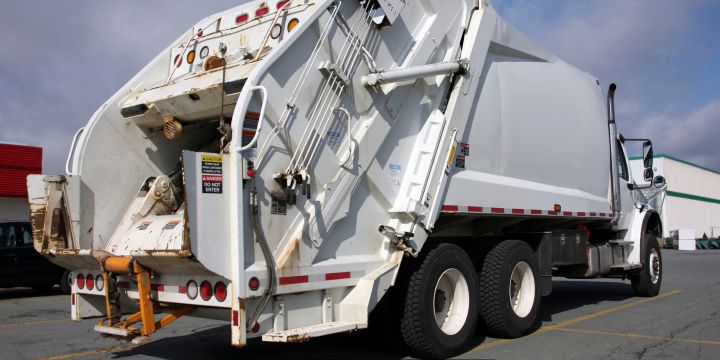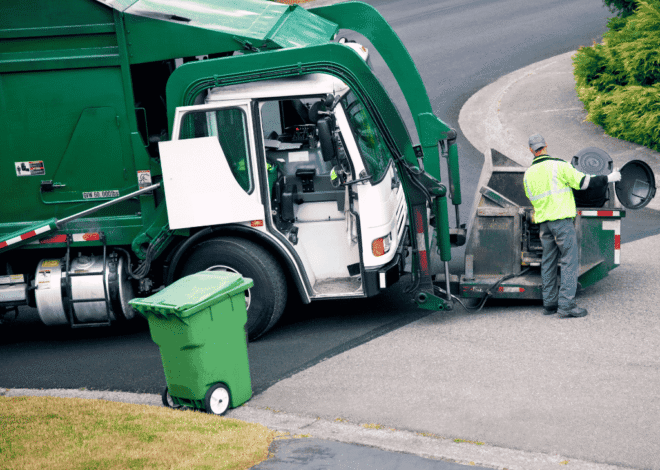
Innovations in Rear Loader Garbage Trucks: Enhancing Urban Waste Management
Key Takeaways
- Modern rear loader garbage trucks employ electric and hybrid technologies to boost efficiency and lower emissions.
- Smart automation and advanced safety features are redefining reliability and performance in waste management.
- Sustainable design and customization are helping meet the unique challenges of dense, rapidly growing cities.
Introduction
Urban environments are rapidly changing, leading to a need for smarter and sustainable waste management solutions. Rear load garbage trucks, known for their robust performance and adaptability, are being pushed beyond basic waste collection to meet the complex needs of today’s cities. Waste haulers and municipalities are prioritizing cleaner, greener, and safer communities, with emerging models optimized for efficiency and safety while reducing their carbon footprint. Modernization of rear loader trucks is crucial for urban sustainability, with industry leaders and local governments recognizing the substantial returns in operational performance, public health, safety, and neighborhood cleanliness. These vehicles are breaking new ground and setting new industry standards across various sectors.
Electrification and Hybrid Powertrains
Leading the wave of change is a robust push towards all-electric and hybrid propulsion systems. Cities with ambitious emissions targets are increasingly adopting electric rear loader garbage trucks, powered by advanced lithium-ion batteries and regenerative braking mechanisms. These sustainable vehicles offer lower fuel costs, reduced greenhouse gas emissions, and quieter operation, making them ideal for dense residential areas where noise and air quality matter. Recent reporting from The New York Times highlights how this shift is helping cities reach their green energy goals.
Advanced Automation Systems
Automation technology is revolutionizing waste collection by streamlining the process and enhancing both speed and worker safety. Modern rear loader garbage trucks are now equipped with automated arms, robotic lifters, and integrated compaction systems, enabling them to handle various bin sizes with minimal operator input efficiently. Features such as these reduce manual labor requirements by as much as 50%, allowing one-person crews to cover more ground. Automated systems ensure bins are lifted, emptied, and returned accurately and consistently, significantly reducing the risk of injury or mishandling—a crucial advance for the industry. An in-depth review from The Wall Street Journal underscores the growing adoption of automation in municipal waste services.
Smart Fleet Management
Connected technology is at the heart of the newest fleet management strategies. GPS tracking and onboard telematics allow waste haulers to map optimal collection routes, monitor vehicle status in real time, and schedule preventive maintenance before costly breakdowns occur. Sensors embedded in collection bins can monitor fill levels, alerting drivers and dispatchers to address overflowing containers efficiently. In cities such as Berlin, these smart systems have reduced overall fleet mileage by 17%, resulting in direct savings on fuel and lower wear and tear on vehicles. Case studies highlight how data-driven decision-making boosts the productivity and reliability of rear loader fleets.
Enhanced Safety Features
Safety remains a top priority in the design of rear loader garbage trucks. The addition of collision-avoidance systems, 360-degree cameras, and improved ergonomic controls significantly lessens the potential for accidents in high-traffic urban environments. For instance, the latest models deployed in the streets of New York City come equipped with enhanced visibility systems and automated sideloading functions, reducing risk to both workers and pedestrians. These innovations represent a welcome shift for sanitation workers, offering not only protection but also user-friendly interfaces to ensure every shift ends safely.
Sustainable Manufacturing Practices
As cities commit to buildings and operations with lower environmental footprints, the suppliers of rear loader trucks are moving toward greener production methods and recyclable materials. Recycled steel bodies, low-VOC paints, and sustainable manufacturing processes help minimize environmental impact from assembly to end-of-life recycling. Regulations and public expectations are driving faster adoption of eco-friendly options, making green procurement a standard practice in municipal contracts.
Customization for Urban Environments
No two cities are the same, and neither are their waste management needs. Manufacturers now offer custom rear loader truck configurations designed to maneuver tight city streets, address specific bin types, and handle unique waste streams. This approach ensures that trucks can efficiently collect waste from high-rise buildings, commercial zones, and densely packed neighborhoods. By adapting fleet specs to local conditions, municipal agencies can further improve collection rates, reduce noise complaints, and enhance service delivery.
Conclusion
The transformation of the rear loader garbage truck, powered by electrification, automation, and smart technology, is reshaping how cities approach waste management. These vehicles are no longer just tools for refuse collection—they’re frontline assets in creating clean, efficient, and sustainable urban environments. With investments in new technologies and operators’ commitment to best practices, our cities will benefit from safer streets, lower emissions, and improved quality of life for residents.



